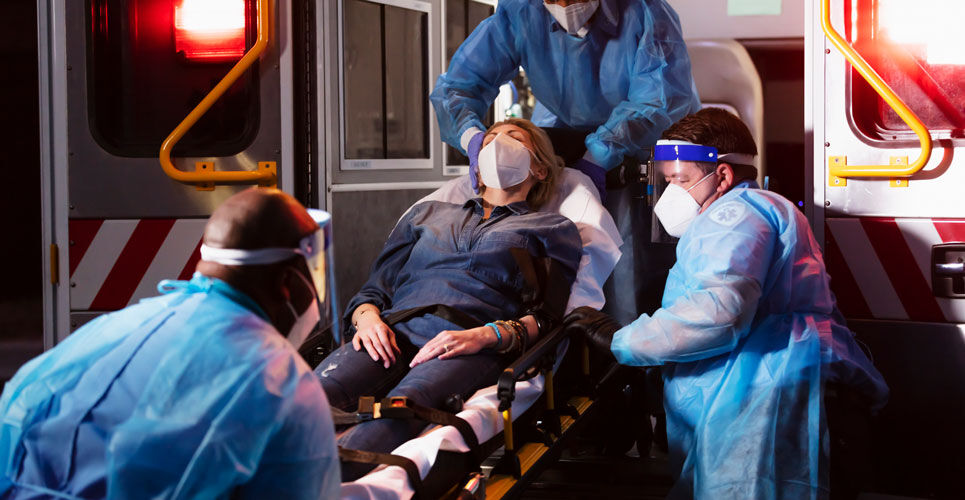Risk assessment tools can help to improve emergency medical staff’s initial pre-hospital assessment of patients with suspected COVID-19
Risk assessment tools can be of additional value in assisting emergency medical services personnel when deciding whether to transport a patient with suspected COVID-19 to hospital. This was the key conclusion of a study undertaken by a team from the School of Health and Related Research, The University of Sheffield, Sheffield, UK.
Emergency medical service (EMS) staff have always had an essential role in deciding whether to convey community-based patients with a suspected COVID-19 infection to hospital. Risk factors for adverse outcomes among COVID-19-infected inpatients that can be assessed in a primary care setting include increasing age, decreased oxygen saturation, dyspnoea on presentation and the presence of comorbidities. However, clinical prediction models need to be developed and validated to calculate outpatient risk scores. While a number of risk assessment tools for those with suspected COVID-19 have already been developed, these have been validated only in hospitalised patients. If these tools were to be applied to patients before reaching hospital, it might be possible to reduce unnecessary hospital attendance.
For the present investigation, the researchers undertook a retrospective analysis of the utility of five risk assessment tools to predict severe illness in adults with suspected COVID-19 before being transferred to hospital. The team were also interested in comparing the accuracy of the risk-stratification of each tool with the existing clinical decision-making process employed by EMS clinical staff.
The team examined five different tools: PRIEST tool, NEWS2, the World Health Organization (WHO) algorithm, CRB-65 and PMEWS. They set the primary outcome of the study as death, renal, respiratory or cardiovascular organ support at 30 days after the first (i.e., index) date of attendance by EMS staff. The secondary outcome was death up to 30 days after the index date. Each of these tools was retrospectively applied to adult patients to assess their accuracy for the primary and secondary outcomes. Each tool was assessed in terms of the area under the receiver operating characteristics curve (AUC) and both sensitivities and specificities were calculated and compared with the values obtained by the EMS clinical staff’s decision to transfer patients to hospital.
Risk assessment tools and COVID-19 outcomes
A total of 7549 patients with a mean age of 60 years (47.5% male) were included in the analysis, of whom 17.6% experienced the primary outcome and 14.1% the secondary outcome of death.
Among the whole cohort, the decision to transfer to hospital was made by an EMS clinician for 65% of patients, and of whom, 22.9% experienced the primary adverse outcome.
The sensitivities of each of the risk assessment tools were all all above 90%, except for CRB-65 (89%). In comparison, the EMS clinician decision to transfer a patient to hospital had a sensitivity of 84% (95% CI 83 – 85%) and a specificity of 39% (95% CI 39 – 40%) for the primary outcome.
From the five tools, the authors determined that some tools such as the PMEWS, WHO and NEWS, although having a higher sensitivity than the EMS, would actually lead to a 10% increase in the conveyance to hospital. In contrast, the PRIEST tool, while it had a higher sensitivity than the EMS assessment, would not increase the number of patients transported to the hospital.
The authors concluded that PRIEST would improve the EMS sensitivity of triage but not increase the number of patients transferred to hospital and could therefore be of assistance to staff.
Citation
Marincowitz C et al. Prognostic accuracy of triage tools for adults with suspected COVID-19 in a prehospital setting: an observational cohort study. Emerg Med J 2022

